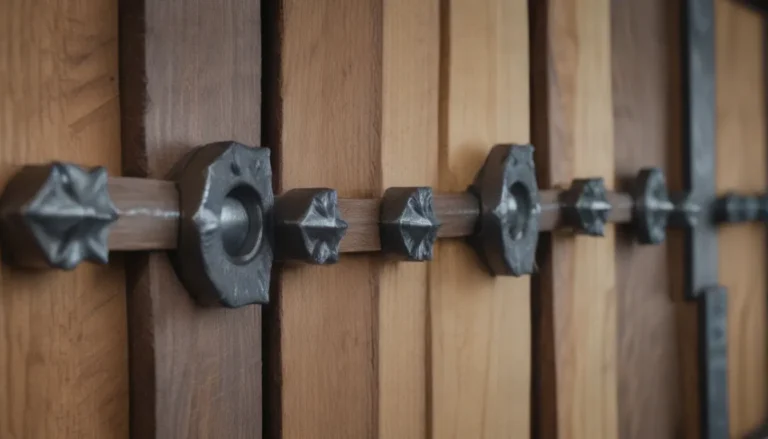Understanding PEI Tile Ratings: A Comprehensive Guide to Tile Durability and Selection

When it comes to choosing the right tile for your project, understanding the PEI (Porcelain Enamel Institute) tile rating system is essential. This system is designed to quantify the hardness and durability of ceramic and porcelain tiles, helping you select the most suitable option for your specific needs. In this comprehensive guide, we will delve deep into the world of PEI tile ratings, exploring how they are determined, their significance in tile selection, and where you can find this important information.
What is PEI Tile Rating?
The PEI tile rating system provides valuable information about the suitability of a tile for different applications based on its hardness and durability. Developed by the Porcelain Enamel Institute, this rating process specifically tests the surface wear layer of a tile’s enamel glazing. It is important to note that the PEI rating does not measure the fracture strength of the entire tile or its slip resistance. Instead, it focuses on how well the surface enamel can withstand abrasion over time.
PEI tile ratings range from 0 (suitable for wall applications only) to 5 (designed for heavy-duty floor traffic). Understanding these ratings can help you make informed decisions when selecting tiles for your project, ensuring that they will perform well in their intended use.
How PEI Tile Rating Helps
Ceramic and porcelain tiles come in various types, each designed for specific uses. Some tiles are intended for walls only, while others are suitable for floors, and some can be used for either application. The PEI tile rating serves as a shortcut for determining where a tile can be used effectively. For example, a tile with a PEI rating of 0 is best suited for light-duty use on walls, while a PEI 5-rated tile is ideal for heavy commercial traffic on floors.
By understanding PEI ratings, designers and homeowners can confidently select tiles that will perform well in their intended applications. Always remember to refer to the manufacturer’s instructions for proper tile installation to ensure optimal performance and longevity.
Quick Tips:
- Always defer to the manufacturer’s instructions for proper tile installation.
- Some companies may omit PEI ratings and provide location/room recommendations instead.
How PEI Tile Rating Is Determined
The PEI rating is determined by measuring the surface enamel’s resistance to abrasion using a rotary abrasion resistance testing machine. This machine applies steel ball bearings to the surface of the tile and measures the number of revolutions required before visible abrasions appear. The PEI rating is then assigned based on this abrasion resistance, with ratings ranging from 0 to 5. Tiles that are not glazed, such as natural stone tiles, are generally not rated using the PEI system due to their unique characteristics.
PEI Class and Usage:
- PEI Class 0: Light-duty use, suitable for walls only.
- PEI Class 5: Heavy-duty floor traffic, ideal for commercial applications.
Choosing the Right Materials Based on PEI Ratings
When selecting tiles, it is important to consider the PEI class to ensure that the tile will perform well in its intended application. A class 0 or 1 tile may crack if used on floors due to its light-duty nature, while a class 5 tile may be too heavy for wall applications. However, the PEI rating is just one factor to consider when choosing tiles. Some tiles may not have a PEI class rating but are designated for specific applications based on other criteria.
Tiles designated for walls typically require less durability as they do not experience foot traffic. These tiles can be thinner and smoother, with intricate designs that may not be suitable for floors. On the other hand, floor tiles often have a textured finish to improve slip resistance, especially in areas prone to moisture.
While PEI ratings are valuable, some companies may provide location and room recommendations instead of specific PEI ratings. This information can help guide you in selecting the right tile for your project based on its intended use.
Where to Find PEI Tile Ratings
Finding PEI ratings for tiles can be challenging as the Porcelain Enamel Institute does not maintain a centralized database of ratings. Instead, you will need to look for this information in the tile’s manufacturing details, typically found on the sales sheet or product specification sheet. Manufacturers often provide information on where the tile can be installed, including whether it is suitable for walls, floors, or both.
In addition to PEI ratings, some companies go a step further by specifying the rooms where the tile is recommended for installation, such as kitchens, bathrooms, or hallways. By paying attention to these recommendations, you can ensure that the tile you choose is well-suited for its intended location and usage.
In conclusion, understanding PEI tile ratings is crucial for selecting the right tile for your project. By considering the PEI class, along with other factors such as location and room recommendations, you can make informed decisions that will result in a durable and long-lasting tile installation. Remember to always follow the manufacturer’s instructions for proper tile installation to achieve the best results.
Next time you’re shopping for tiles, keep these tips in mind and use the PEI rating system to guide you in selecting the perfect tile for your needs. Happy tiling!





